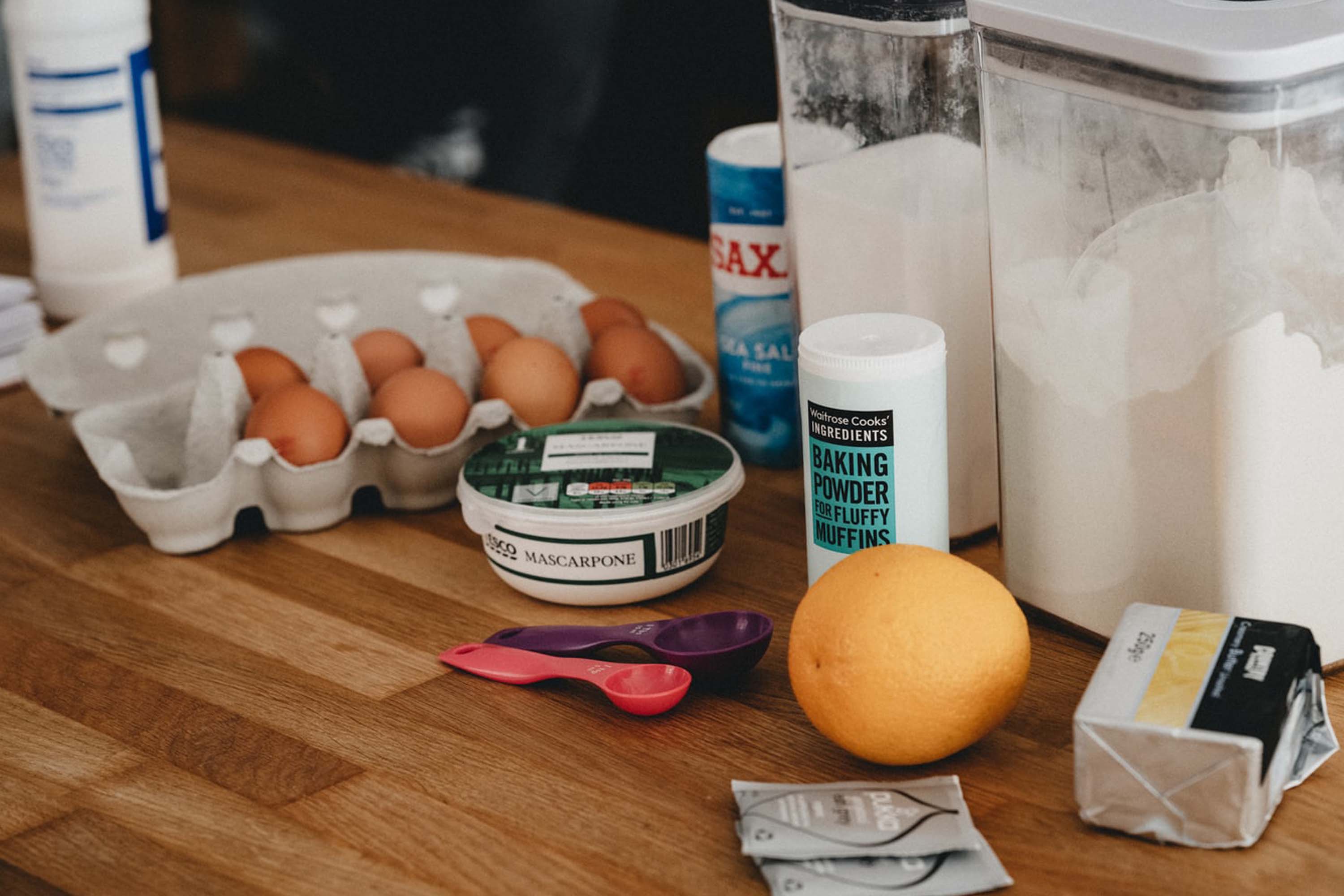Powdered stuff with the mysterious name is probably something all of us have seen in a grandma’s cabinet wondering what that could be. Unlike such well-known raising agents as sodium bicarbonate or baking powder, cream of tartar gives us no clue of its area of application yet it turns very handy during the food-making process!
However, inexperienced home chefs often stumble across the same point of concern that is “what is the optimal cream of tartar sub?”. Is that what bothers you, too? Great, then you came to the right place since today we will explain what can serve as the cream of tartar alternatives, and you will have an opportunity to learn more about this stuff in general.
The Best Cream Of Tartar Substitutes
We can make use of one of the several cream of tartar alternatives for baking purposes. These alternatives include products that all of us are well familiar with, such as citrus juice, yogurt, buttermilk, and several others. Each of those can repeat the effect of this fine powdered product, and below we will explain in detail what the perks of each substitution are.
Cream of tartar substitute: baking powder
Whenever we go for some baking powder as cream of tartar alternative, very few of us recall that, in fact, baking powder already includes some cream of tartar among its components. It is one of the crucial constituents in it!
Using baking powder as the cream of tartar sub will allow us to lift the dough when we make cookies or other baked goodies at home. Sometimes, however, one can come across recipes that demand the presence of both tartar and baking soda in it. In this situation, the first one is needed to trigger the soda reaction to lift the dough. In such cases, if in doubt of what amount to add, simply incorporate three parts baking powder for replacing two parts cream of tartar.

Cream of tartar substitute: baking soda
Soda is a universal alternative and a cream of tartar frequent substitute in biscuits and other baked yummies! Nevertheless, it is essential to take into consideration that, if the recipe asks for both, it will be much better to shift for some baking powder.
See, soda and cream of tartar must cooperate because the latter one makes soda actually react and lift the dough. Of course, it is always possible to give it a try and, let’s say, go for some soda activated by acetum, but one never knows how well the reaction will be.
So to skip any unwanted issues like a flat and improperly baked goodie, better opt for baking powder in the following measurements: one little spoonful of powder instead of a quarter teaspoon soda plus half teaspoon cream of tartar.
Cream of tartar substitute: citron juice
Citron juice is a great cream of tartar sub since it contains citric acid needed for the lifting reaction. However, take into consideration that this liquid must be used together with baking soda, otherwise, the juice on its own will not work as a lifting agent!
Opt for citrus juice as a cream of tartar substitute for vegan goodies especially since it will give the dough the light citrus aroma and scent, and moreover, the lifting effect will be super effective.
To make this impressive duo work, simply double the amount of cream of tartar, and replace it with that much lemon juice instead. In case cream of tartar is needed for stabilizing the egg whites, add half a teaspoon of citron juice per egg white to receive the wanted effect.
White acetum
This alternative may seem strange because of the rather specific scent of this liquid. Won’t it spoil the taste and flavor of the baked goodies, some may bother? However, just like the citrus juice, white acetum is very handy when we need to stabilize egg whites or lift the batter. For instance, it can become a handy cream of tartar substitute for an angel food cake!
The substitution ratio is also the same as for the sour citron drink: per each part of the cream of tartar, use the doubled amount of acetum.
Yogurt

This dairy foodstuff can serve us as another variation of the cream of tartar, it is only required to take into consideration that we will have to thin it out (for instance, by adding some milk or aqua) to receive the consistency that is liquid enough for incorporating it to the batter successfully. Buttermilk can serve well as a cream of tartar substitute in various biscuits.
Buttermilk
This foodstuff is frequently used as cream of tartar substitute for making cookies and other baked yummies, but only for those that need cream of tartar along with soda for lifting the dough!
To incorporate it properly and not make the dough too liquid, go for a quarter cup buttermilk instead of each ⅛ teaspoon of cream of tartar. However, be aware of the excess liquid in a batter. As a solution, we recommend everyone remove approximately a quarter cup of liquid from it.
No cream of tartar at all
Yep, you got it right! The last (but also well-working) solution is not to add this stuff at all. And even though in most situations it is always possible to find a fitting replacement, for certain occasions, it might be simpler to just skip the cream of tartar completely rather than searching for a fitting sub.
For instance, if we need to stabilize egg whites somehow, and this tartaric substance is needed for that purpose, it will be simpler to skip it completely if we for some reason can’t make use of it (e.g. we don’t have it on hand right now).
Another situation when the cream of tartar can be safely skipped is when we are making icing or frosting, and this stuff is required for avoiding crystallization. In this situation, if we don’t incorporate it, it will not affect the final result.
Some people often wonder: can cream of tartar be a substitute for cornstarch? Well, honestly speaking, it is not the best idea. See, unlike some starch-containing thickeners like tapioca or cornstarch, cream of tartar simply lacks the same ability to dissolve in a liquid and thus create gelation. So no, we would definitely not recommend using it as a jellifying option.
So these were the most widespread and frequently used alternatives for the cream of tartar. Since all of them are natural, each of these alternative products can successfully be used in healthy foods and sweets that you make at home. But we do invoke you to double-check whether the particular recipe allows any changes like that prior to beginning to cook!
Cream Of Tartar Substitutes For Different Dishes
Since cream of tartar is used as either a stabilizer or as a lifting agent, or for preventing sugar from crystallizing, it is widely used for all sorts of baked delicious things like cookies, pancakes, souffles, and others.
But what if you started the culinary process and suddenly realized you ran out of this so needed ingredient? No worries, in this case, we can always go for one of the alternatives. However, this is when most home chefs stumble since it is often unclear what exactly subs can be used in different situations. Can we go for the same alternative ingredient when making cookies and, let’s say, meringue?
To solve that issue, simply memorize what alternative products can be successfully used instead of this powder in distinct recipes.
- Cream of tartar substitute for meringue

When we are looking for a cream of tartar substitute in meringue, the optimal variant is to grab some white acetum. Seriously, despite its scent that may seem too strong to some of you, this liquid works perfectly when we need to stabilize egg whites to transform them into steady peaks! By the way, for souffles it will also be an ideal match.
If you are too suspicious about its smell, feel free to shift it to citron juice. Like that, you will receive the same effect along with the nice and delicate citrus aroma in addition.
- Cream of tartar substitute for cookies
Going to make some delicious sweet yummies for the dessert but have no tartaric stuff? No problem, sub it for baking powder or cooking soda in reasonable amounts. For instance, this will be the ideal cream of tartar substitute in snickerdoodles. By the way, buttermilk or yogurt will also work ideally in baked goodies.
Please take into consideration that acetum is better to be avoided in baked stuff since it can alter the food’s texture and taste!
What Is Cream Of Tartar?
Since now we are aware of what this stuff does to dishes and what other ingredients we can replace it with, why not take a chance to figure out what it actually is?
For those who never used it or used it randomly and didn’t basically wonder about its origin, the name of the substance may seem somewhat confusing. A cream of what?!
Despite its name, this stuff has nothing to do with either dairy foods or the sauce we all use for dipping fish into. Its scientific name sounds like potassium bitartrate (just try to pronounce that from the first try!), and this fine powdered product is an acid derivative of the winemaking. It is the whitish residue that remains on the walls of the barrels after the winemaking is over, to be precise.
Nobody knows when its properties were first found and when it first began to be used in culinary, but today this stuff is a staple in many kitchens worldwide.
What Is Its Purpose In Cooking?
Since it is a kind of acid (tartaric acid to be precise), when being combined with certain ingredients, for instance, baking soda, it triggers lifting reactions. This is the major reason why this acidic stuff is efficient as a leavener.
However, it also has other qualities, such as stabilizing that are widely applied when we, for instance, work with egg whites or when we need to prevent sugar from crystallizing.
In general, this stuff makes our baked goodies softer, lighter, and helps the icing or syrups remain liquid instead of crystallizing over time.
How Do We Keep It?
We all are well aware that no food or culinary ingredients last eternally. And of course, to keep such kitchen helpers like soda or tartaric acid working, we must ensure they are being stored respectively.
But how is it correct to keep cream of tartar at home? It is not usually utilized that often so those of us who do make use of it mostly shove the box to the cabinet shelf and forget about it until the nest culinary rush.
But is that correct? Nope, it is not! Tartaric acid has its own storage instructions:
- it must be kept in a dry area
- stock it away from heat
- the tank must be protected from any humidity or moisture coming from outside
- it is better to find a shady place for it
- ensure the powder is not neighboring with the strong-smelling foods
For even better results, we would recommend everyone find a resealable odor and moisture-safe tank and transfer the stuff into it instead of keeping it in a carton box it was sold in. But if your stuff was originally packed in a tin resealable can, feel free to leave it there. As for the particular place, the pantry is the ideal spot but your kitchen cabinet will be a somewhat more practical choice.
Cream Of Tartar Shelf Life
Imagine we pack and stock our tartaric acid correctly according to all the rules. How long will it last in this case? Well, in theory, this stuff can last very very long, but of course, with time, it will start losing potency gradually.
So if we are talking of cream of tartar at its peak strength, then its lifespan will be approximately half a year after the best-by date. But the product will keep its potency for four years in general from the date of production mentioned on the box.
[table id=120 /]
How to Tell If It’s Bad

Is there any possibility to define that the product got spoiled? Well, as a matter of fact, if no water gets onto it, it will be fine. But just in case, take into consideration several obvious signs of spoilage:
- mold
- the powder turned into a solid lump
- traces of any organic growth
- color changes
- dark specks
Whenever any of those are noticed, discard the stuff instantly!
Like that, keeping and using the cream of tartar now will be much simpler for everyone, we believe! This stuff is really extremely handy when making baked yummies, so even if it’s not utilized regularly in your kitchen, ensure it is kept correctly to extend its lifespan for enjoying delicious goodies and making more tasty culinary experiments!
[wp-faq-schema title=”Frequently Asked Questions”]

Hi! Gonna make angel food cake for the first time but I found out that no cream of tartar is left! What is the cream of tartar substitute for angel food cake?
Hi! I’d recommend using lemon juice (replace every ⅛ tsp of tartar with ½ tsp juice). It has the same effect and also gives that very light citrus note. Love it! You can also go for vinegar but I’m concerned about the smell so…Lemons!
What cream of tartar substitute can I use in snickerdoodles? Anything except for vinegar please!
I guess that the best option is baking powder since it can substitute both tartar and soda (and you will have to substitute both if you don’t have tartaric acid).
Does anyone know a cream of tartar substitute for royal icing? I need something that won’t make it crystallize.
I would recommend you white vinegar or, if you’re worried about the smell, lemon juice. I tried both and each worked well.